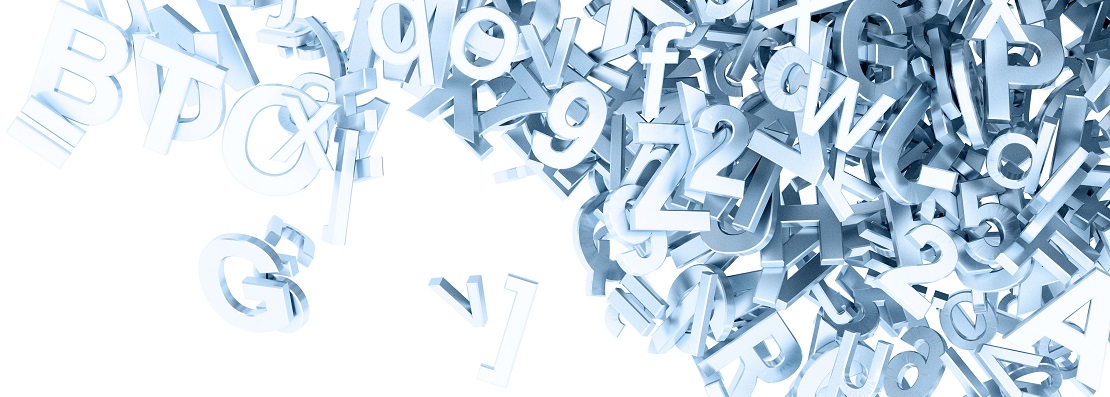We have collected some of the words and concepts that we use when we talk e-commerce and sort out abbreviations. Contact us if there is any expression that you want to add or know more about.

E-commerce and marketing
A / B test - Split test - Are used to test different variants to see what performs best. For example, it can be about seeing which design, functionality or content converts best.
Attribute - Property - Different properties that you can put on a product. For example, colour or size may be an attribute of a t-shirt.
Click & Collect - Means that the customer orders the product in the online store, which is then reserved and picked up in a physical store.
Cross sales - Additional sales - A strategy for selling additional products to a customer. For example, through "This product fits well" or "Others have also bought".
CTA - Call To Action - Call to an action you want visitors to perform. For example, "Add to cart" or "Click here".
Dropshipping - Means that the product is sent directly from the manufacturer or distributor to the end customer.
GTIN - Global Trade Item Number - A global numeric code to give articles, packaging, and services unique article numbers. This is the number below a barcode. For your own products, you buy such a number series.
Omnichannel - Is about giving the customer a seamless experience across all channels. Whether it is an app, social media, web shop or physical stores, the customer must recognize themselves. The strategy must be uniform to contribute to the whole and improve the customer journey.
Product - Model, style - Describes a larger amount of SKU that is the same product but with different properties such as colour, material, size.
SEM - Search Engine Marketing - Pay for keywords in the form of Ads. For example, through Google or Bing.
SEO - Search Engine Optimization - To customize your site / web shop so that Google easily understands how it should be presented in search results.
SKU - Stock Keeping Unit - Unique code (sometimes article number) that is assigned a unique product / product combination to identify it. Often specific to a company.
Social shopping - Social commerce - Is about using social channels and ways to interact with user-generated content during the purchase journey. Imagine going to town with a friend for shopping to get taste advice and tips, though it happens online instead.
UI - User Interface - Graphic design of your site.
Unified commerce - A further development of omnichannel and means that all systems are integrated so that all information is the same regardless of channel and is made available immediately. For example, the store balance is updated immediately to be displayed on the e-commerce site.
Up sales - Additional sales (amount) - A strategy for selling a more expensive product to the customer.
UX/CX - User Experience/Customer Experience - How your customer gets the best experience when using your web shop.
Systems around e-commerce
CMS - Content Management System - System for managing and publishing information on the website.
CRM - Customer Relationship Management - System for managing customers and customer relationships.
DAM - Digital Asset Management - System for managing digital resources such as images, movies, audio, and documents. In addition to the resource itself, the system also handles a lot of metadata about the resource itself.
ERP - Enterprise Resource Planning - The business system - Manages business processes and integrates the company's functions within finance, supply chain, operations, reporting, manufacturing, and personnel.
PIM - Product Information Management - System for managing product information, images, variants, etc. from which you can publish data to all sales channels.
Punchout - System for opening up e-commerce to the customer's purchasing / business system. The customer creates the shopping cart and sends it directly to their own system.
Technology
.NET - A development platform from Microsoft. A collection of components that you use when writing applications.
API - Application Programming Interface - An interface that you program to. It is used for different applications to be able to communicate with each other and is used to retrieve and update information between different systems.
Headless - Headless e-commerce can be described as decoupled e-commerce. With the API structure that exchanges information between the backend platform and the customer-oriented part, the e-commerce solution is designed to be quickly scaled, adapted, and expanded.
IIS - Internet Information Server - Microsoft's server software for Internet-based services, a so-called web server.
JS - JavaScript - A dynamic scripting language used primarily on the client side, is executed in the browser's JavaScript engine.
React - A JavaScript library used to build modern web applications. Developed by Facebook and is open source.
Redux - A JavaScript library to handle the state of an application. Often used with React.
SQL - Structured Query Language - A language for accessing and manipulating data in a relational database.
Webapi - A programming interface adapted for web applications.